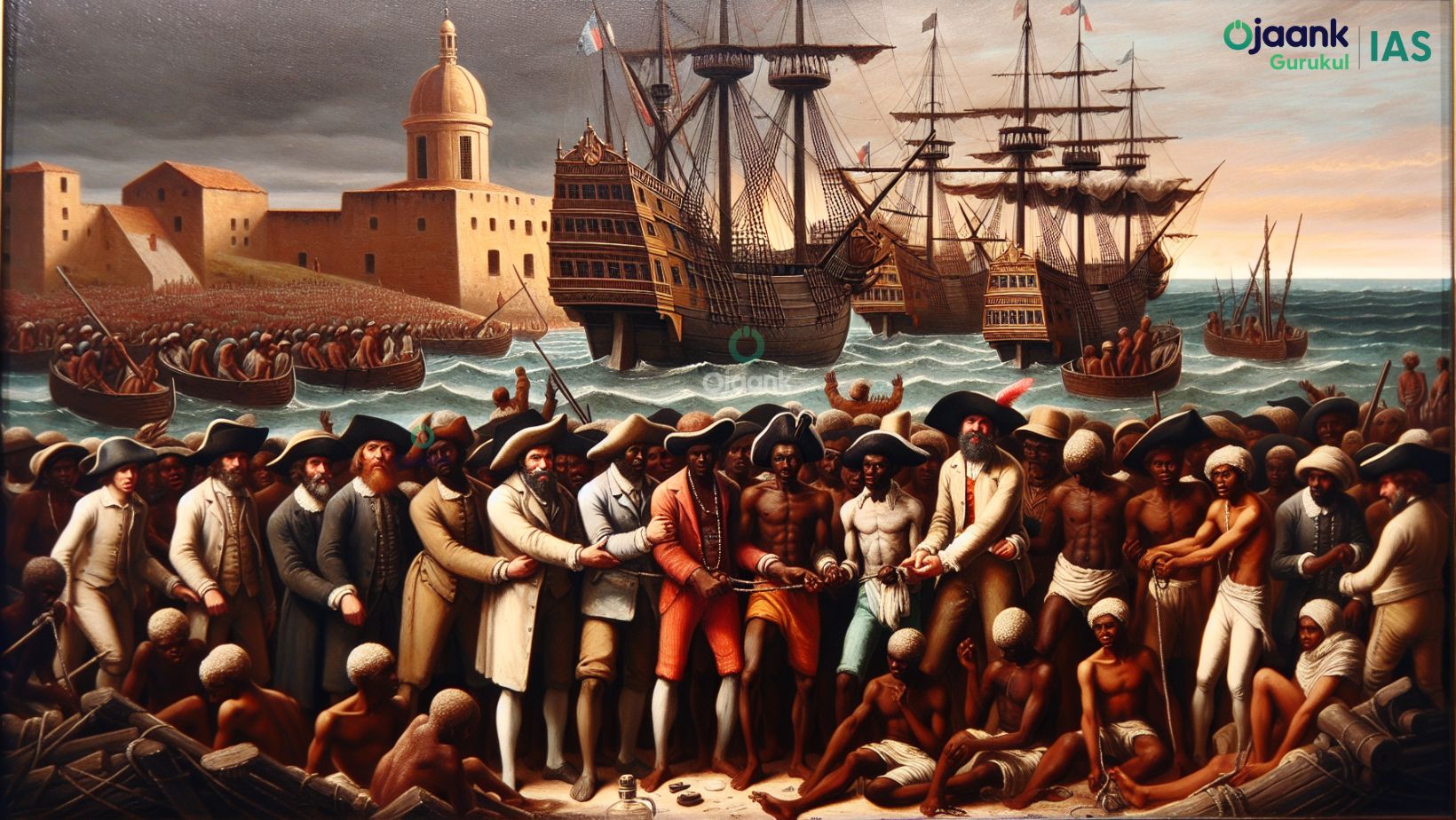Exposed: The Harsh Reality Behind the Indian Indentured Labour System !

1.What was the significance of the Age of Discovery in relation to slavery?
The Age of Discovery, beginning in the late 15th century with explorers like Christopher Columbus and Vasco da Gama, marked a period where European powers explored and colonized vast new territories. This era was significant for the development of the transatlantic slave trade as European colonizers required cheap labor for their plantation economies in newly discovered lands. Slavery became an integral part of this era, with millions of Africans forcibly transported to the Americas and other colonies.
2. How did the Haitian Revolution contribute to the abolition of slavery?
The Haitian Revolution, which began in 1791 and concluded in 1804, was a pivotal event in the history of slavery. It was the first successful slave revolt that led to the establishment of Haiti as the world's first slavery-free country. This revolution set a precedent and inspired other abolitionist movements worldwide, highlighting the possibility of successful resistance against oppressive colonial and slavery systems.
3. What role did British abolitionist movements play in the ending of slavery?
In the 1830s, British abolitionist movements gained significant political influence, advocating for the end of the slave-led plantation economy. This culminated in the Slavery Abolition Act of 1833, which legally freed approximately 800,000 slaves in British colonies. These movements were part of broader Victorian liberal values that emphasized human rights and economic freedom over forced labor.
4. Can you describe the conditions and experiences of Indian indentured laborers?
Indian indentured laborers, often from economically distressed regions, were contracted to work in British colonies under harsh conditions. These agreements, known as Girmit or indentures, typically offered minimal wages and required several years of service. The laborers faced difficult living and working conditions, and many were unable to return to their homeland after their contracts expired. This system was akin to a new form of slavery, bound by economic hardship rather than legal ownership.
5. What led to the end of the indentured labor system involving Indian laborers?
The indentured labor system began to decline in the early 20th century due to increasing criticism and resistance against the oppressive and exploitative conditions faced by laborers. Legal changes and improved labor rights, along with pressure from nationalist movements in India, contributed to the gradual cessation of this system. The last ship carrying Indian indentured laborers left for the West Indies in 1916.
6. How has the legacy of slavery and indentured labor impacted modern societies?
The legacies of slavery and indentured labor have profoundly shaped modern societies, particularly in terms of racial and economic disparities. Descendants of slaves and indentured laborers often continue to face social and economic challenges. However, these histories have also led to rich cultural exchanges and have contributed to the multicultural fabric of many societies, particularly in the Caribbean and parts of Africa.
7. What are some notable memorials that commemorate the history of indentured laborers?
Several memorials have been established to honor the history and legacy of indentured laborers, including the Apravasi Ghat in Mauritius and the Kolkata Memorial in India. These sites serve as reminders of the hardships faced by indentured laborers and celebrate their contributions to the societies they helped build.
8. How did the abolition of slavery influence global labor markets?
The abolition of slavery had a significant impact on global labor markets, notably leading to a demand for labor that was initially filled by systems like indentured labor. This shift also prompted changes in labor laws and practices, eventually leading to more regulated and humane working conditions worldwide.
9. Discuss the impact of the American Civil War on the abolition of slavery.
The American Civil War (1861-1865) was instrumental in the abolition of slavery in the United States. The conflict stemmed from deep-seated divisions over slavery, leading to the secession of Southern states. The war resulted in the Emancipation Proclamation and the passage of the 13th Amendment, which formally abolished slavery in the U.S.
10. What is the significance of the International Day for the Remembrance of the Slave Trade and its Abolition?
Observed on August 23 each year, this day commemorates the start of the Haitian Revolution, which played a crucial role in the abolition of the transatlantic slave trade. It serves as a reminder of the brutal history of the slave trade and its abolition and celebrates the strength and resilience of those who fought for freedom.
By Ojaank Sir